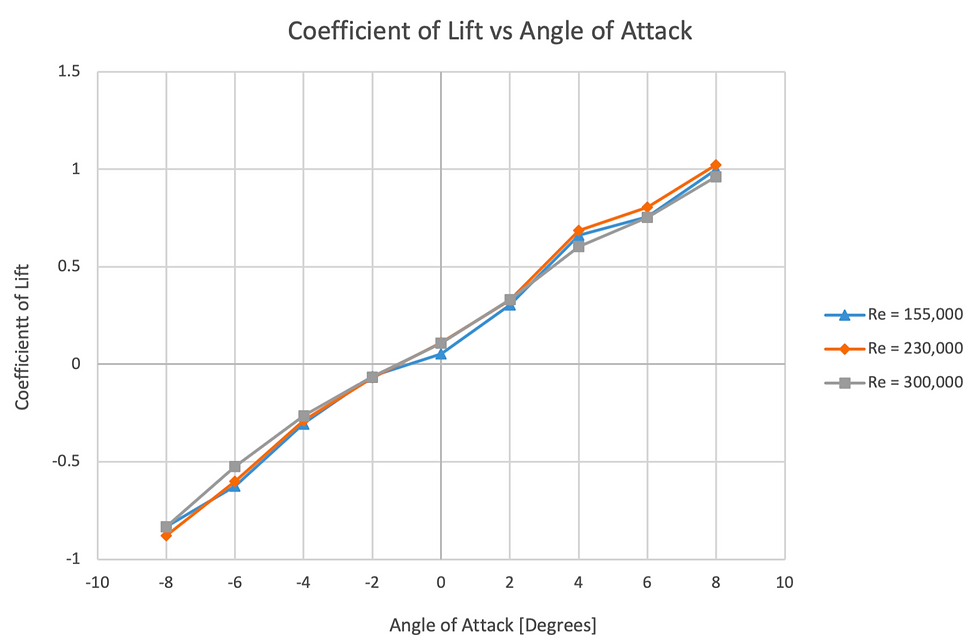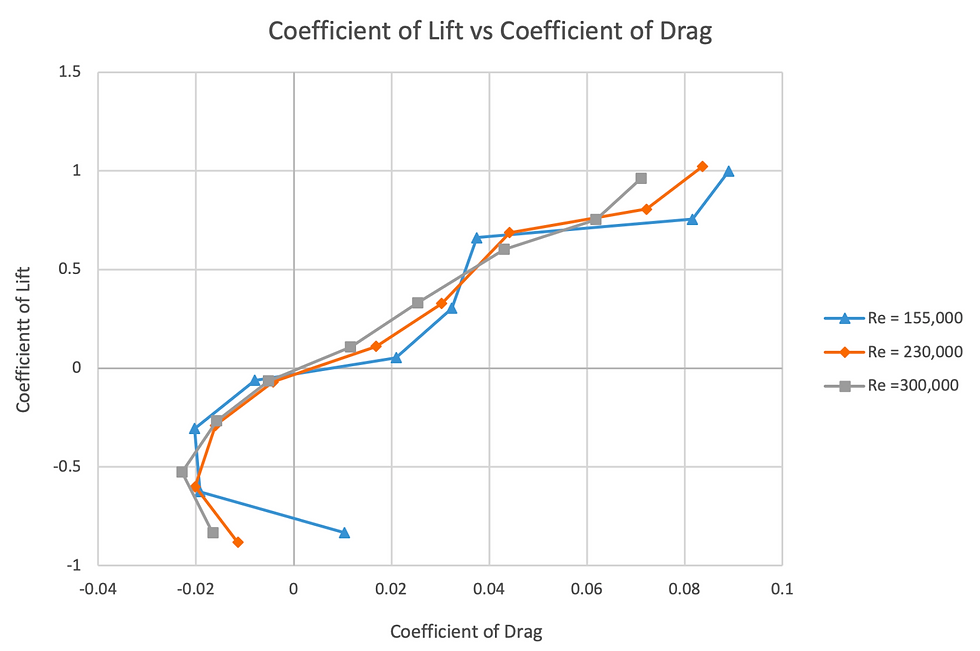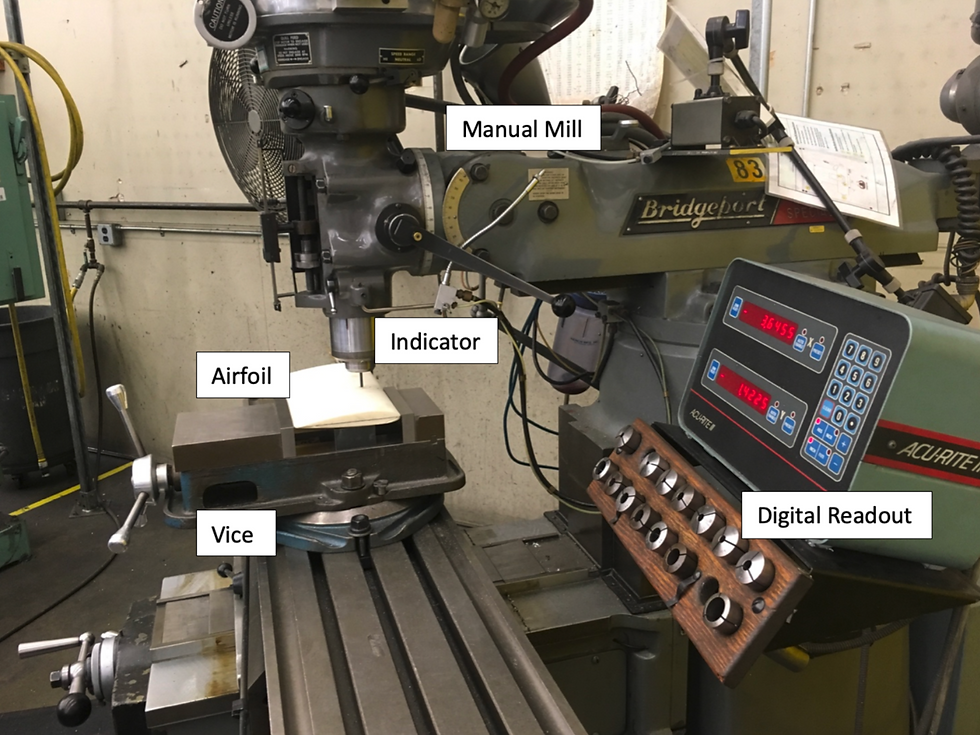Mechanical Engineer
Airfoil Characterization
One of the projects for ME 406 (Experimental Design) was to experimentally determine the aerodynamic characteristics of an airfoil using a wind tunnel and scale model.
This was done by using an airfoil with pressure taps integrated into the upper and lower surfaces. Each tap was then connected to pressure transducers to read the pressure experienced at each tap location. With the location and pressure at each tap known a pressure distribution over the airfoil can be approximated by modeling the surfaces between taps as flat and experiencing a pressure equivalent to the average of the two pressure taps defining the surface. With an approximate pressure distribution, the forces acting on the airfoil were summed to lift and drag forces. The lift and drag were then used to calculate the coefficients of drag and lift for varying Reynold's numbers and angles of attack.
To ensure the location of each pressure tap with respect to leading edge/chord of the airfoil was measured accurately and precisely, a manual mill with an indicator and digital readout was used to measure each tap location. The angle of attack of the airfoil within the air tunnel was varied using a servo motor, allowing for consistent changes in angle of attack. In order to vary the Reynold's number of the airflow the velocity of the airflow was varied using the wind tunnels velocity control.
The coefficients of lift and drag for the airfoil was determined from angles of attack from -8 degrees to 8 degrees at airflow velocities of 50, 75, and 100 ft/. These aerodynamic properties were plotted to determine the relationship between lift and drag for the airfoil. The plots were found to agree with literature findings of the same airfoil profile.







